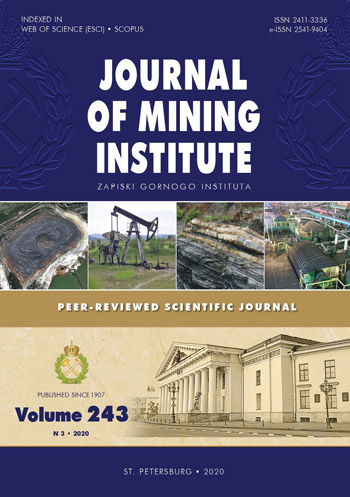The age of mineralization of Mayskoe gold ore deposit (Central Chukotka): results of Re-Os isotopic dating
- 1 — Ph.D. Leading Geologist A.P.Karpinsky Russian Geological Research Institute
- 2 — Head of Department A.P.Karpinsky Russian Geological Research Institute
- 3 — Leading Engineer A.P.Karpinsky Russian Geological Research Institute
- 4 — Geologist of the I Category A.P.Karpinsky Russian Geological Research Institute
Abstract
The article presents the results of the sulfide mineralization dating of the Mayskoe gold ore deposit using the Re-Os isotope system and isochron age estimation method of the main sulfide minerals: arsenopyrite, pyrite, and antimonite. The complex multistage formation of the studied sulfides, as well as the close intergrowths of genetically different mineral phases, did not allow obtaining a single rhenium-osmium isochron corresponding to the formation time of sulfide mineralization. Isochrones for single minerals, collected from each sulfide sample, turned out to be the result of isotopically distinct components mixture (radiogenic crustal and non-radiogenic mantle) and do not make sense from the geochronological point of view. In terms of geology, the most significant result of the study is an age estimation of 128.8 ± 4.4 Ma, obtained for the sulfide mineralization of Mayskoe deposit using Re-Os isotope dating of single fractions of pyrite and antimonite of the ore mineralization stage. While arsenopyrite is most closely associated with gold mineralization, one of the arsenopyrite varieties corrodes framboidal pyrite of the pre-ore stage, has a maximum of the crust component in the osmium isotopic composition and forms a mixing line in the isochron diagram with an apparent formation age of 458 ± 18 Ma. The initial osmium isotopic composition of the studied sulfides indicates a mixed mantle-crust source of sulfide mineralization. The issue of simultaneous ore genesis and granitoid magmatism in the Mayskoe deposit remained unresolved (the age of granitoids according to the U-Pb zircon system is 108 Ma). However, a possible solution could be the further determination of the Re-Os isochron age of the ore mineralization sulphides from the single paragenesis of a specific sample containing both arsenopyrite and pyrite (+ antimonite) with gold.
